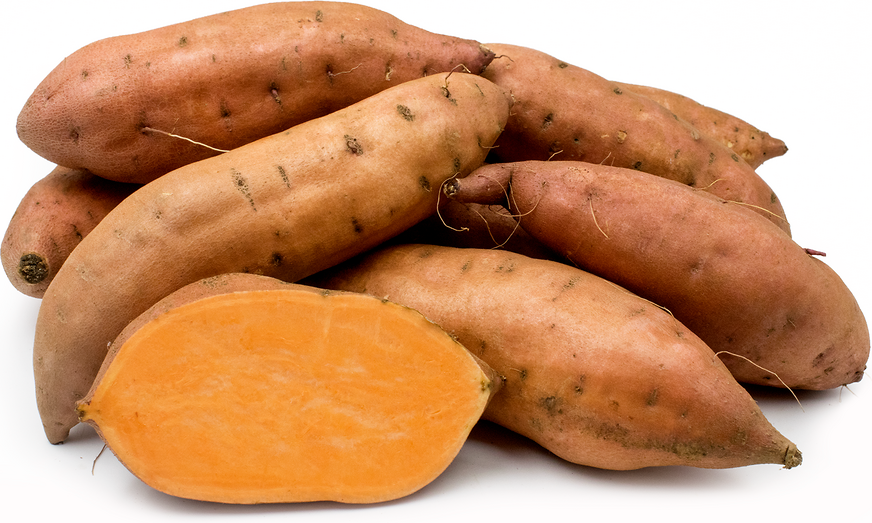


Jewel Yams
Estimated Inventory, 40 lbs : 0
Description/Taste
Jewel yams are medium to large in size and are ovate and cylindrical in shape with tapered ends. The rough skin showcases a brown-rose hue and is often speckled with darker spots and faint lines. It is also covered in small, root hairs and shallow eyes. The flesh is a vibrant orange and is firm, dense, and moist. When cooked, Jewel yams retain their bright orange-yellow hue and offer a moist, starchy, and fluffy texture. Its flavor is sweet with a subtle earthiness and nuances of chestnuts.
Seasons/Availability
Jewel yams are available year-round, with peak season in fall through winter.
Current Facts
Jewel yams, botanically classified as Ipomoea batatas, are a root vegetable and are members of the Convolvulaceae or morning glory family. They are not a true yam but rather an orange-fleshed variety of sweet potato. Renamed from sweet potato to yam as a means to distinguish the orange-fleshed sweet potato from the white-fleshed sweet potato, yams such as the Jewel are required by the USDA to be labeled both as yams and sweet potatoes, though the latter is commonly dropped in today’s marketplace. Jewel yams are favored for their sweet flavor and are used in a variety of sweet and savory culinary applications.
Nutritional Value
Jewel yams are rich in beta-carotene, dietary fiber, vitamin B6, vitamin C, potassium, iron, and calcium.
Applications
Jewel yams are best suited for cooked applications such as baking, roasting, steaming, and mashing and are used in both sweet and savory preparations. Jewel yams can be baked or roasted and served as is or with complementary ingredients. They can also be sliced into halves or chunks and then steamed and mashed or pureed to make soups, pie fillings, gnocchi, custards, and sauces. Cubed or sliced Jewel yams can also be added to breakfast hash, risottos or used as a stuffing for hand pies such as empanadas. Sliced into sticks or rounds, Jewel yams can be baked to make fries. Complimentary flavors include bell pepper, shallots, lime, cilantro, sage, apple, bacon, poultry, butter, Greek yogurt, honey, maple syrup, cumin, thyme, chili pepper, pecans, feta, and parmesan cheese. When storing, refrigeration should be avoided as it causes the yam to spoil faster. Jewel yams will keep up to four weeks when stored in a dark, dry and cool location.
Ethnic/Cultural Info
The sweet potato has long been an important food crop around the world. Today along with the garnet and beauregard, the Jewel is one of the most commonly grown and consumed sweet potatoes on the American market. In the United States, orange-fleshed sweet potatoes, since their arrival to the marketplace, have been referred to as yams. They were given the name yam as a means to distinguish them from the white-fleshed type. True yams, a member of the Dioscoreaceae family are rarely grown in the United States.
Geography/History
The majority of yams, as we know them in the United States, are botanically sweet potatoes and are native to prehistoric tropical America, specifically Ecuador and Peru. The Jewel yam was created in the United States in the mid-20th century and is widely available across the United States today at specialty grocers and farmers markets.
Recipe Ideas
Recipes that include Jewel Yams. One




